Glenn Curtiss, the Father of the Aviation Industry? Didn’t the Wright Brothers fly first?

There’s no doubt the Wright brothers were first in flight. The brothers ran a successful bike shop, but were infected with a passion for flight. They had faith and belief that they could design and fly a powered aircraft.

The brothers headed to Kitty Hawk, North Carolina. They liked the area for its consistent winds, isolation, and sandy ground. (They didn’t want to crash on rocky surfaces.)

On December 17, 1903, Orville Wright became the first man to successfully fly a powered aircraft. It was 12 seconds that changed the world. The flight was only 120 feet long, but they had proven it worked. Not only that, they proved it could be repeated. The brothers flew the Wright flyer 3 more times that incredible day.
- Flight 1: 120 Feet
- Flight 2: 175 Feet
- Flight 3: 200 feet
- Flight 4: 852 Feet
The Wright Brothers discovered that the key to controlled flight was the ability to twist the wings. The brothers created an early system for lateral (roll) control that consisted of pulleys and cables to twist the trailing edges of the wings in opposite directions. The Wright brothers patented the technology and called it “Wing Warping.”

AILERONS
However, it was Glenn Curtiss who invented and applied the use of Ailerons to aircraft. Unlike “Wing Warping” which quickly became obsolete, ailerons are still the method of control used in modern aircraft today.
Curtiss was already famous for being the fastest man on earth on his motorcycle. But Curtiss was unstoppable. He wanted to fly and saw his first success with the “June Bug” also known as Aerodrome #3. The June Bug used the aileron steering system. Daredevil Curtiss flew the June Bug successfully 3 times on June 21, 1908.
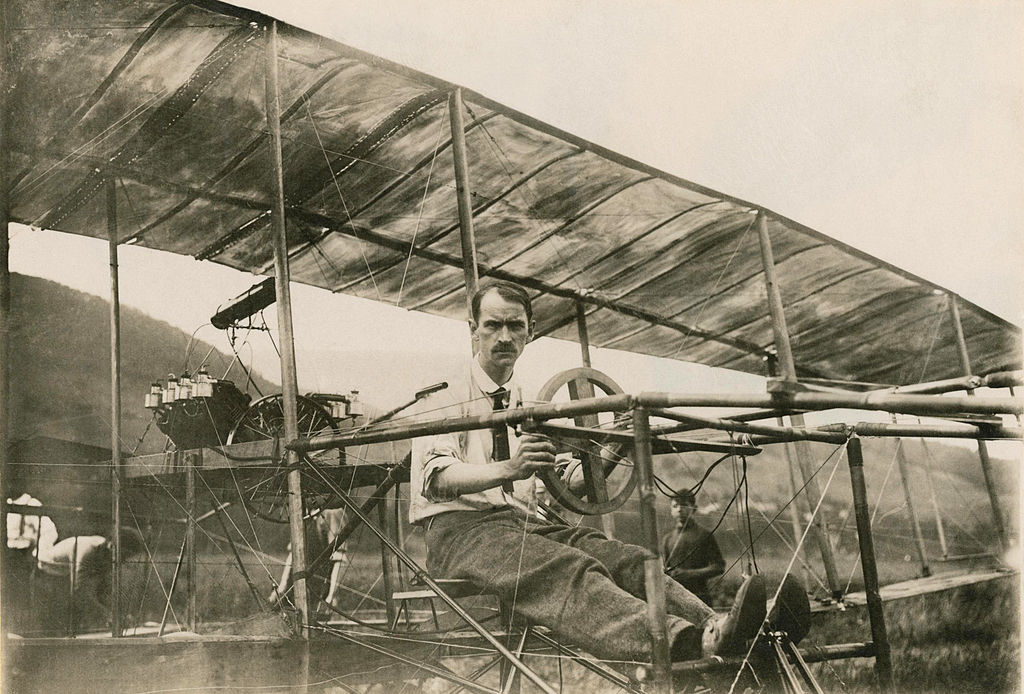
June Bug flights of June 21, 1908:
- Flight 1: 456 Feet
- Flight 2: 417 Feet
- Flight 3: 1,266 feet at 34.5 mph
Four days later, the June Bug was flying distances of 2,175 feet and 3,420 feet. This is nearly 5 years after the Wright brothers first flew, but you could see where flight durations and distances are starting to expand.

AVIATION COMPETITION
Thanks to this success, Curtiss competed in a Cup attempt on July 4, 1908 where he successfully flew the June Bug an astounding 5,360 feet or 1.6 kilometers in one minute and 40 seconds. Curtiss won the trophy and the $25,000 cash prize.
One of the things you’ll notice is that the Curtiss June Bug had wheels. The Wright Flyer did not. The Wright Flyer was launched from a catapult system on a track and landed on sand. The Curtiss June Bug was designed to launch off its own propulsion and land on any field.
The next summer, Curtiss competed head to head with Wright aircraft at an aviation meeting at Reims, France. Curtiss won the aviation meet piloting his No. 2 “Reims Racer” with a flight of 12.5 miles in under 16 minutes clocking in at 46.5 mph. While the Wright brothers were focused on their patent, Curtiss was focused on being the best.
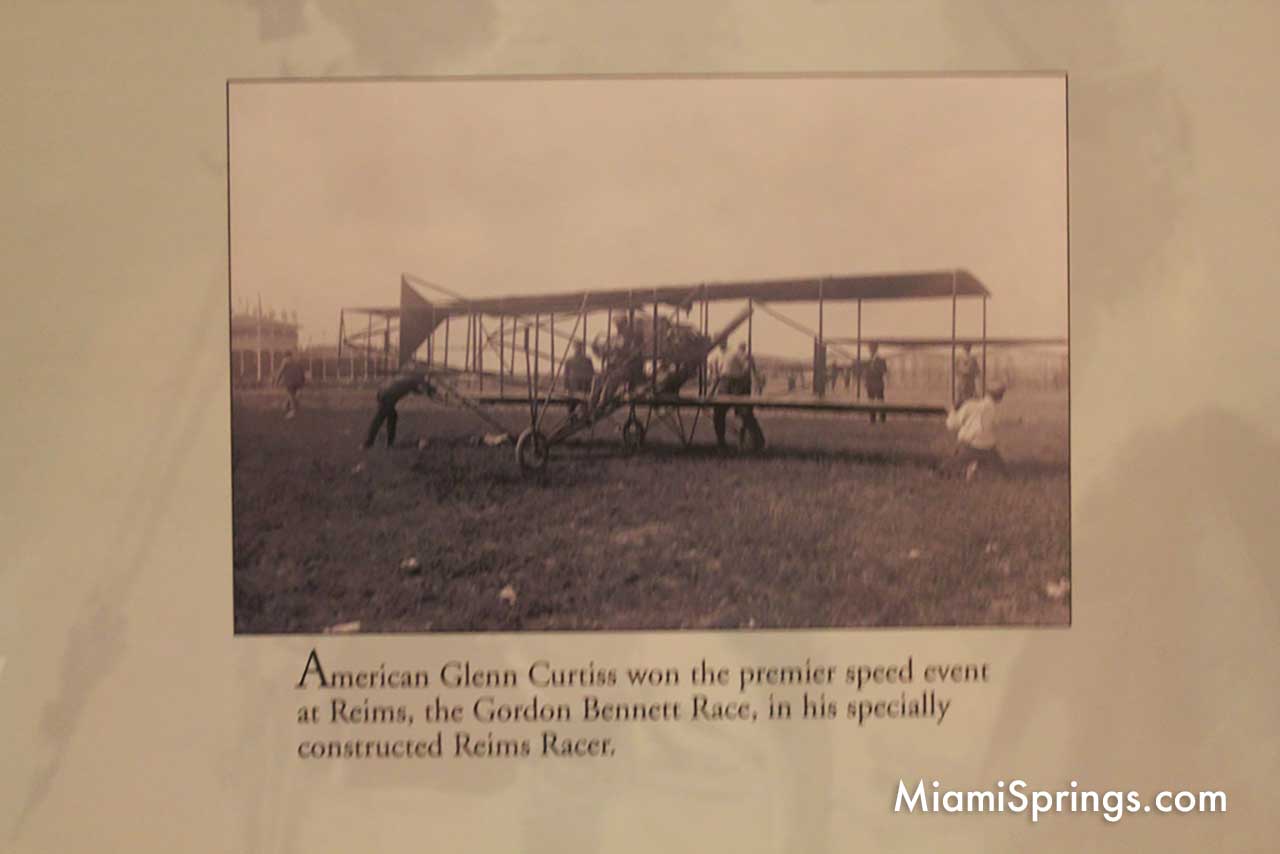
On May 29, 1910, Glenn Curtiss became the first man to make a long distance flight between two major cities. Curtiss flew from Albany to New York City, a distance of 137 miles in under 4 hours. That included 2 refueling stops along the way. For this feat, Curtiss was awarded a $10,000 cash prize and the Scientific American trophy.
THE PATENT
Despite the success Curtiss was having in designing a more advanced aircraft, the Wright Brothers were awarded the patent on airplanes which provided significant income. The Wright brothers would receive a royalty from every plane that was being built. Furthermore, the Wright brothers had the power to decide who could and could not use the patent license. The Wright brothers shunned Curtiss and did not give him the license to use the patent. Undeterred, Curtiss continued innovating while simultaneously fighting the Wright brothers in court.
To say that things got nasty between Curtiss and Wright would be an understatement. The fight between the two companies was legendary. Some say that the pressure from Curtiss led to the untimely death of Wilbur Wright. Ultimately, World War I forced the need for better cooperation and the United States government stepped in and forced a patent pool solution whereas both companies would receive royalties until the patents expired.
THE WAR
World War I created the need for the United States to acquire manned aircraft for both the Army and the Navy. Glenn Curtiss’ manufacturing prowess and superior airplane designs made him the winner of the largest government contracts. Instantly, Curtiss became the biggest aviation company in the U.S. selling thousands of airplanes and employing 18,000 workers in Buffalo and 3,000 workers in Hammondsport. The Wright Brothers were first in flight, but Curtiss is the father of the aviation industry.
Curtiss is also considered the Father of Naval Aviation. According to the Smithsonian Institute, Curtiss received the Collier Trophy in 1911 for the development of the hydro-aeroplane, a land airplane mounted on floats. In 1913, Curtiss developed the first practical and successful flying boat, the Model E. As you can see in the photo below, the Model E didn’t use a pontoon. Instead the entire fuselage served as the hull.

One of the most famous aircraft during World War I was the Curtiss JN-4 “Jenny”. Mainly used to train pilots during World War I, it’s estimated that 95% of all World War I pilots were trained with a Jenny. In total, 6,813 Jennys were built. Most were unarmed, but a few were fitted with machine guns and bomb racks to aid with advanced training.
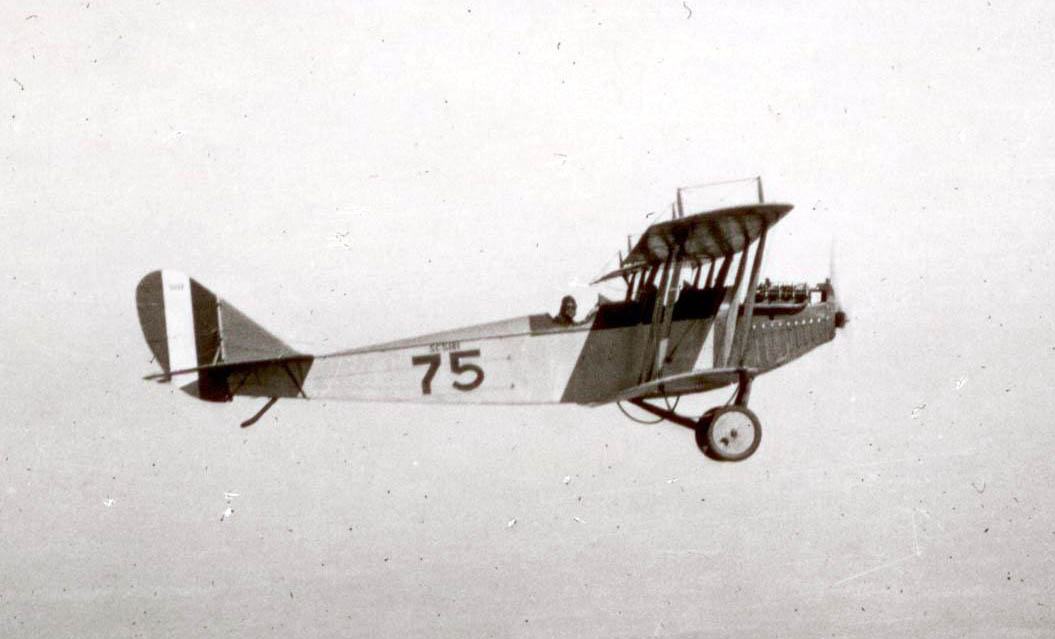
Curtiss also made a naval variant of the Jenny during World War I, the Curtiss N-9H. It was basically a Curtiss Jenny, but affixed with a pontoon to the fuselage. A number of structural and aerodynamic changes were also required. Only one example of the type has survived, and is displayed at the National Air and Space Museum (shown below).


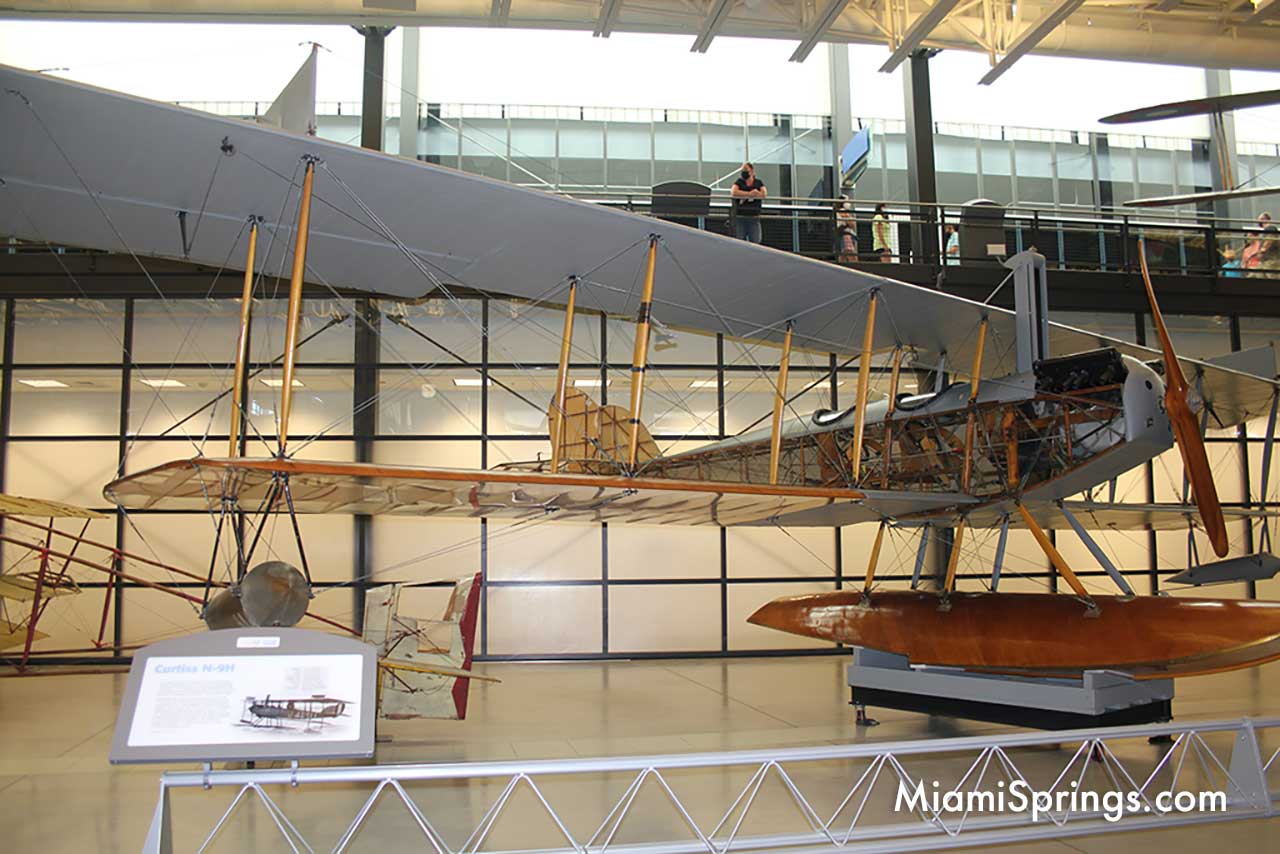
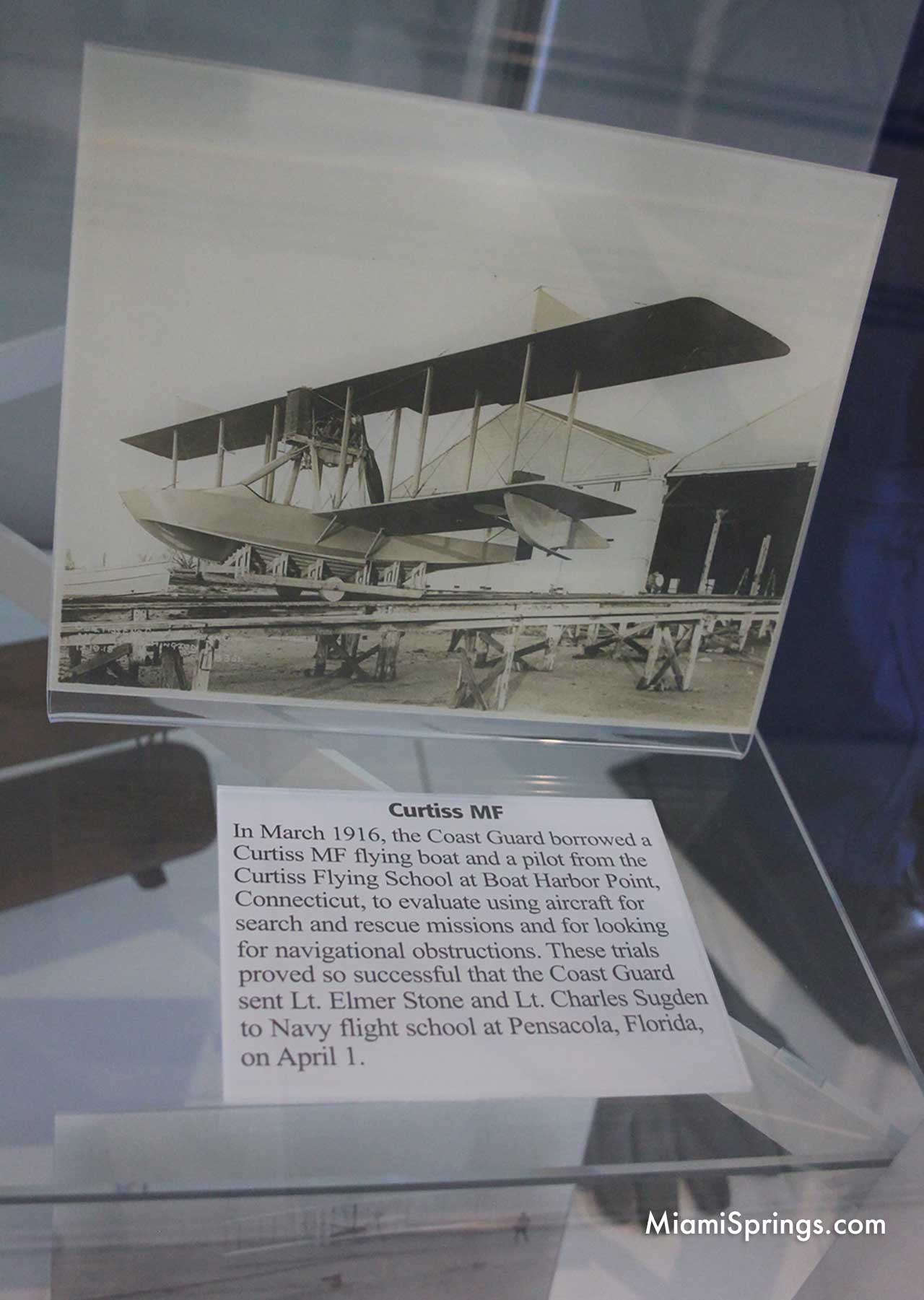
Curtiss NC-4: The 1st Plane to Cross the Atlantic
From the Smithsonian Air and Space Museum: On may 16, 1919, three Navy Curtiss flying boats designated NC-1, -3, AND -4 departed Newfoundland to attempt the first trans-Atlantic crossing by airplane. About 560 kilometers (350 miles) from the Azores, they encountered heavy rain and fog. Lost and low on fuel, NC-1 and NC-3 alighted at sea. NC-4, commanded by Lt. Elmer Stone, the Coast Guard’s first aviator, managed to reach Horta Harbor in the Azores. After 10 days of repairs, NC-4 departed the Azores and arrived iin Lisbon, Portugal on May 28, 1919, completing the first crossing of the Atlantic by air.
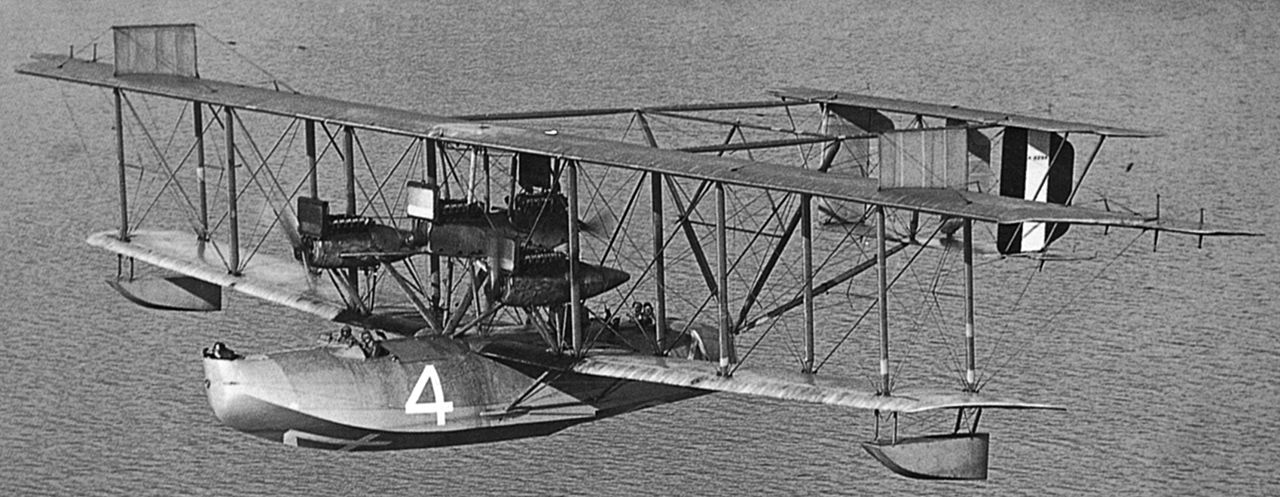





CURTISS-WRIGHT
Ironically, the two companies that bitterly fought against each other during the pioneering era of flight ultimately merged into one powerful company. On July 5, 1929, the Curtiss-Wright Corporation was formed.
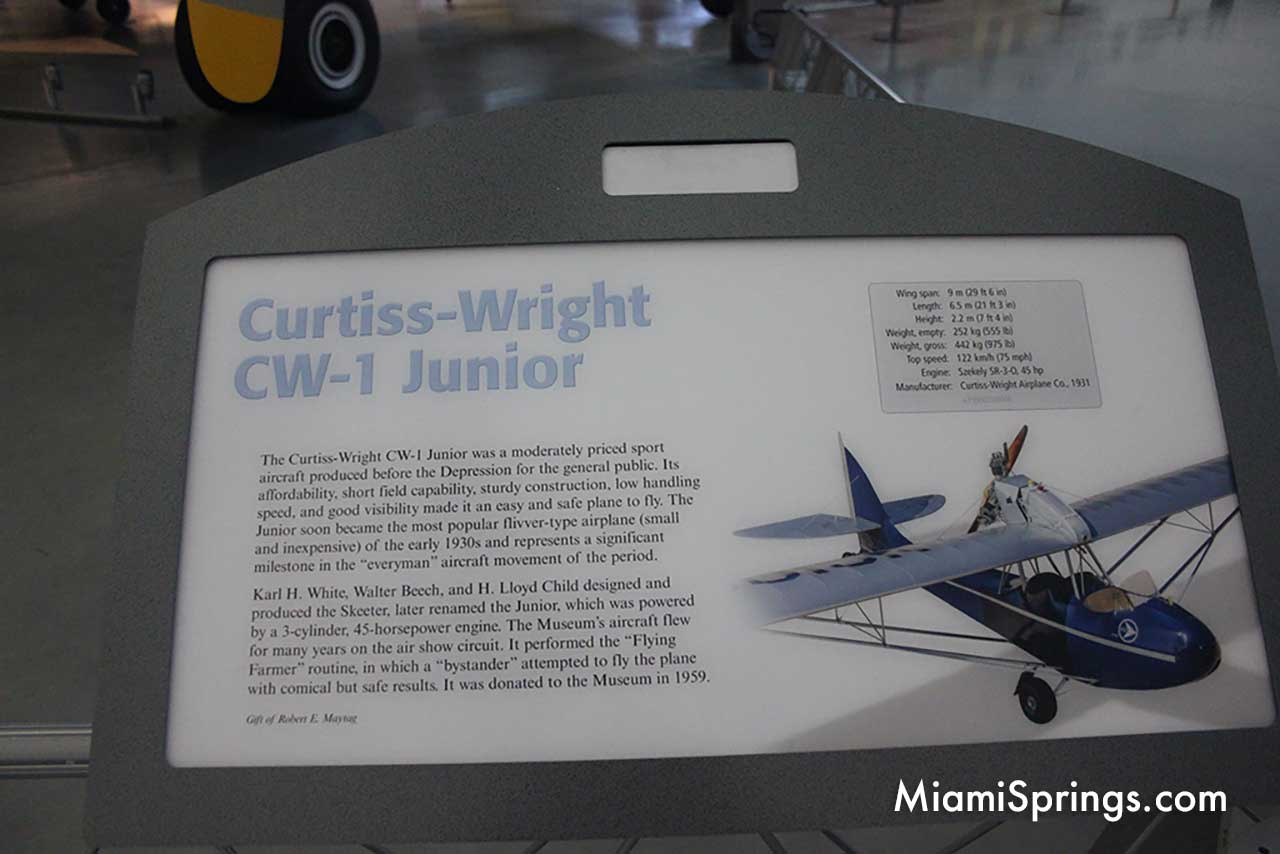
As you can see in these photos, the company continued to build planes after the merger. The CW-1 Junior was a relatively affordable plane that soon became very popular in the early 1930s.

Curtiss-Wright continued to build important aircraft for the military during the second World War. The Curtiss P-40 Warhawk was the 3rd most produced fighter aircraft during the war. The Warhawk is credited with over 2,200 air to air kills during the war, including 973 kills in the China-Burma-India theater.
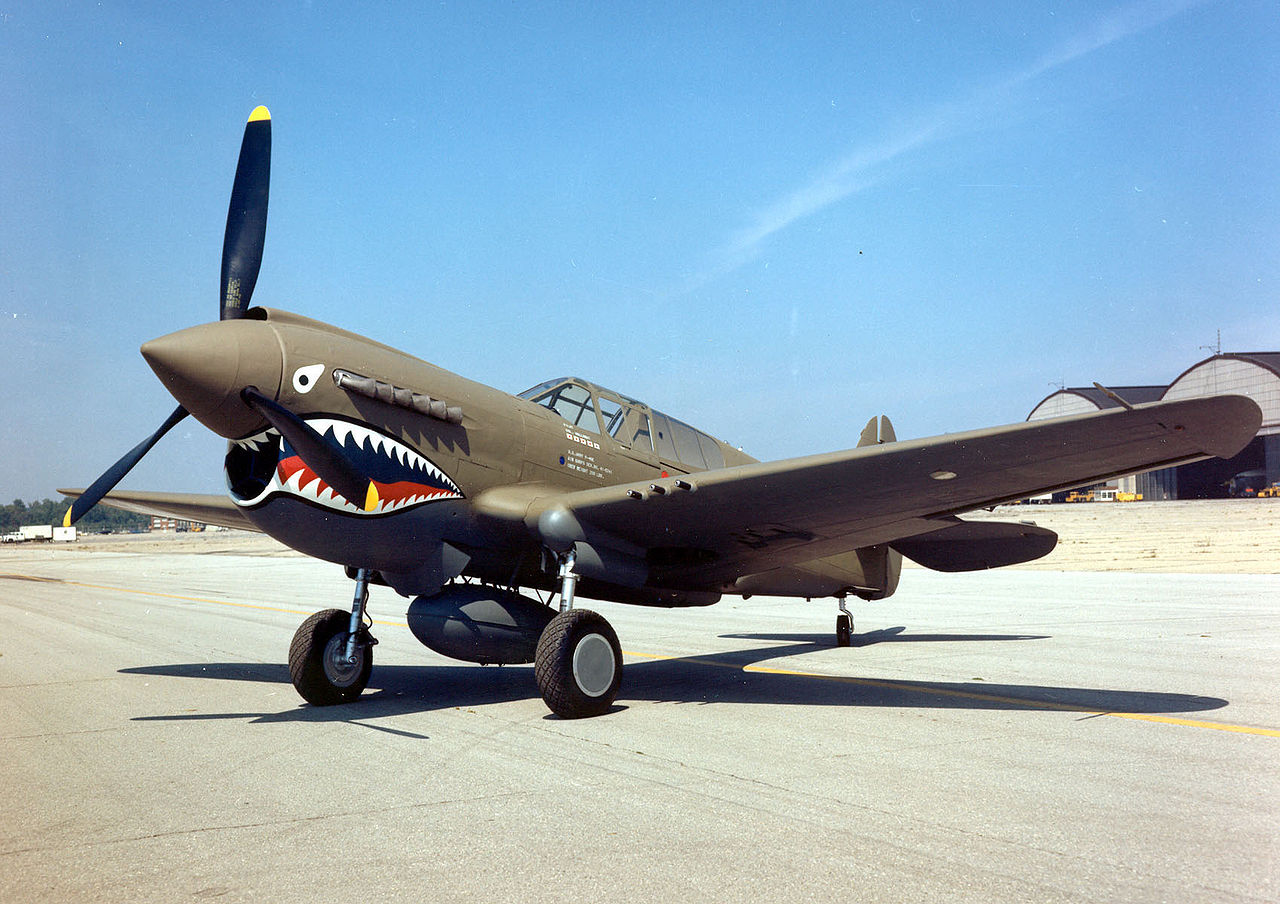
POST WWII
After the war, the various airplane manufacturers competed for a shrinking military budget. The Curtiss-Wright Company produced an experimental jet fighter in 1948 called the Curtiss-Wright XF-87 Blackhawk. It ultimately lost out to a design from Northrop. As such, the XF-87 was cancelled. It would be the final plane produced by the Curtiss-Wright company.

Ultimately, the Curtiss-Wright company diversified after the demise of aircraft production. The company moved into flight research, flight simulation, aviation parts manufacturing, and even components for nuclear submarines that continues till today.
Curtiss-Wright continues to be a global power with with annual revenues exceeding $2 Billion. Learn more about today’s Curtiss-Wright company in the video below:
Looking back at the beginning of aviation, you can see that the Wright Brothers were obsessed with and succeeded at being the first. However, it was Glenn Curtiss who was focused on and succeeded on making aviation great. Glenn Curtiss turned aviation into an industry. An industry that continues to provide jobs and income for our community, for our country, and for the entire world.
Here are some of Glenn Curtiss’ Aviation Accomplishments:
- 1908: 1st army dirigible flight with Curtiss as flight engineer
- 1908: 1st flight of the “June Bug”
- 1909: Sale of Curtiss’s “Golden Flyer” for $5,000
- 1909: Won 1st international air speed record
- 1910: Sets long distance flying record of 150 miles
- 1910: First firearm use from aircraft, piloted by Curtiss
- 1910: First radio communication with aircraft in flight
- 1910: Trained the first female American pilot
- 1910: First successful takeoff from a U.S. Navy ship
- 1911: First successful landing on a ship (Curtiss Plane)
- 1911: Pilot license #1
- 1911: Ailerons patented and still in use today
- 1911: Developed 1st successful pontoon aircraft in U.S.
- 1911: Developed 1st retractable landing gear
- 1911: Sells 1st aircraft to U.S. Army
- 1911: Creates 1st military flying school
- 1912: Developed and flew 1st flying boat
- 1912: 1st ship catapult launch
- 1915: Begins mass production run of “Jennys” and other aircraft
- 1919: Curtiss flying boat becomes the 1st aircraft to cross the Atlantic
- 1921: Develops the City of Hialeah
- 1922: Opens Hialeah Race Track
- 1923: Develops Miami Springs and created a flying school and airport
- 1923: Created the first airboats
- 1925: Built the Curtiss Mansion
- 1926: Developed Opa-Locka and the airport facility
- 1930: Died in Buffalo, New York
MIAMI AVIATION MUSEUM
As many Miami Springs residents know, Glenn Curtiss was not only a daredevil inventor and shrewd businessman, but also the founder of Miami Springs, Hialeah, and the City of Opa-Locka. Glenn Curtiss was the Elon Musk of his era. Or put in another way, Elon Musk is the Glenn Curtiss of the current era.
Point is, Curtiss was a genius and should be remembered for his many contributions. And while we have proudly restored his beautiful Mansion back to its former glory and have several streets named after him (including Curtiss Parkway, Hammond Drive, Glenn Way), we don’t have a single statue of the man. We don’t have a replica of any of Curtiss’ planes except for a small Jenny atop the Gazebo.
The good news is that the Miami Springs Museum will be coming online soon. It’ll be located at Stafford Park and it’s going to be a great start.
However, after visiting some our countries great museums this summer, it got me thinking. Who wants to go the “Miami Springs Museum?” Wouldn’t we be more interested in the “Miami Aviation Museum?” I mean, if I came from out of town and the “Miami Aviation Museum” was just around the corner, I’d try to make a point to see that. Of course, it’ll have the history of Miami Springs within the museum, but if we want to draw an audience, we need to think bigger than just little ol’ Miami Springs.

One more thing that grabbed my attention was this beautiful metal replica of the Wright Flyer at Kitty Hawk. It’s displayed outside and anyone can climb aboard and imagine what it was like to be first in flight. Wouldn’t it be great to have a metal replica of Glenn Curtiss’ “June Bug” or “Jenny” placed outside the Curtiss Mansion alongside a statue of the man?
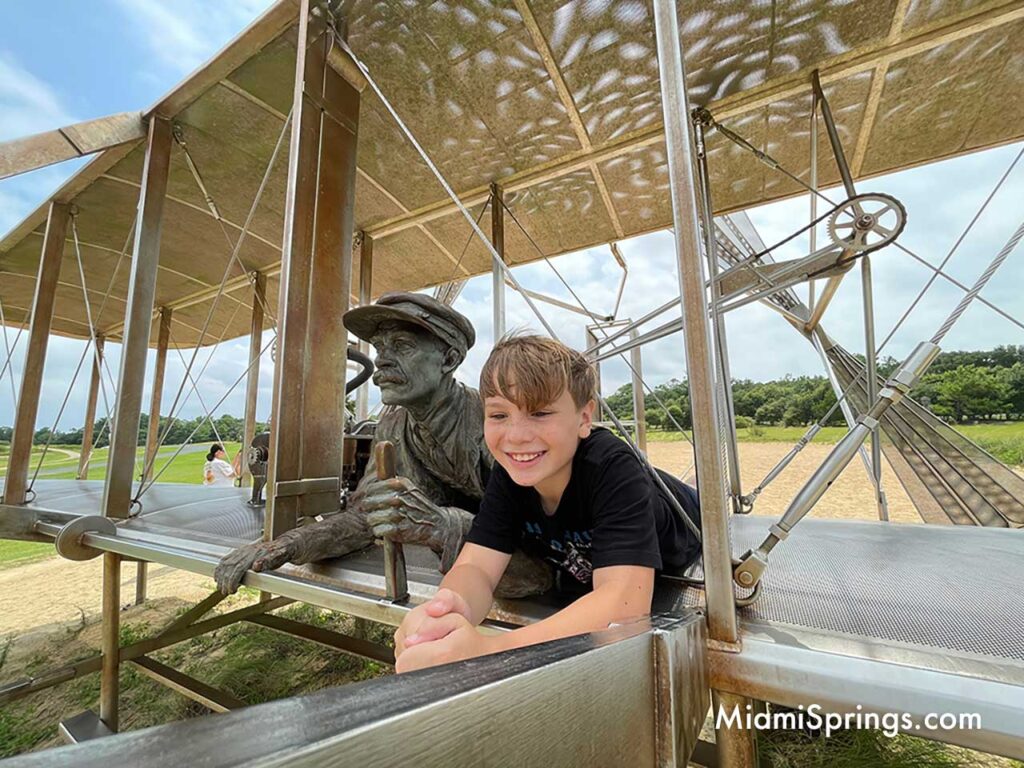
Could we inspire a new generation to greatness? And could we start to finally attract real interest in the history of our area and the greatness of the man that started it all?

Let us know what you think in the comments and please share this story on social media.











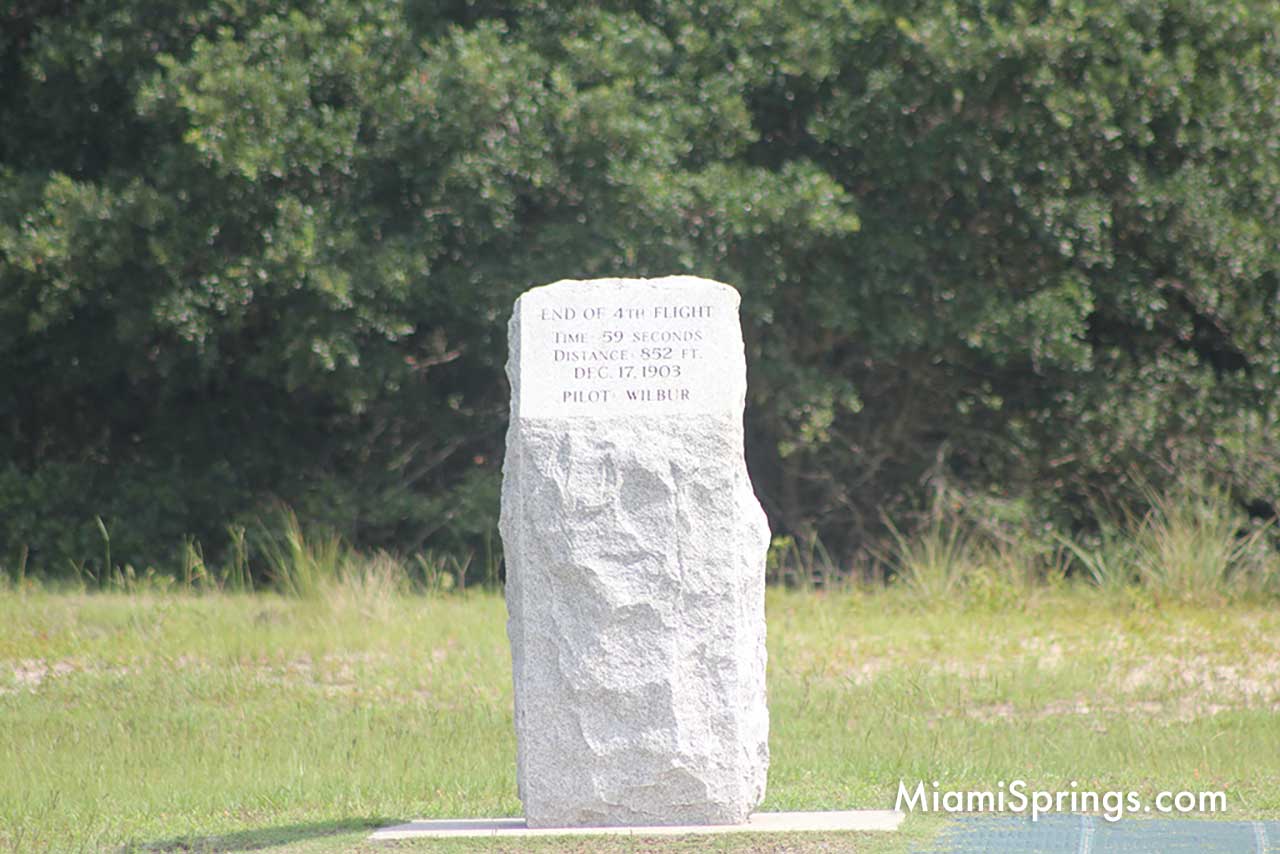
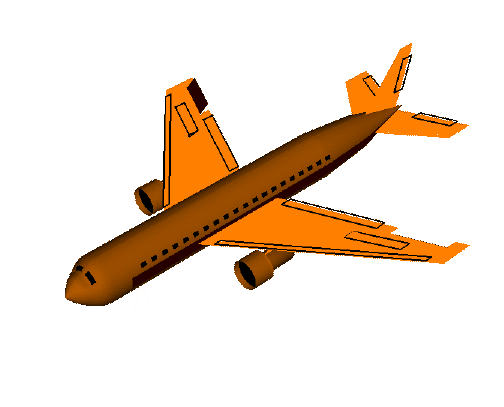
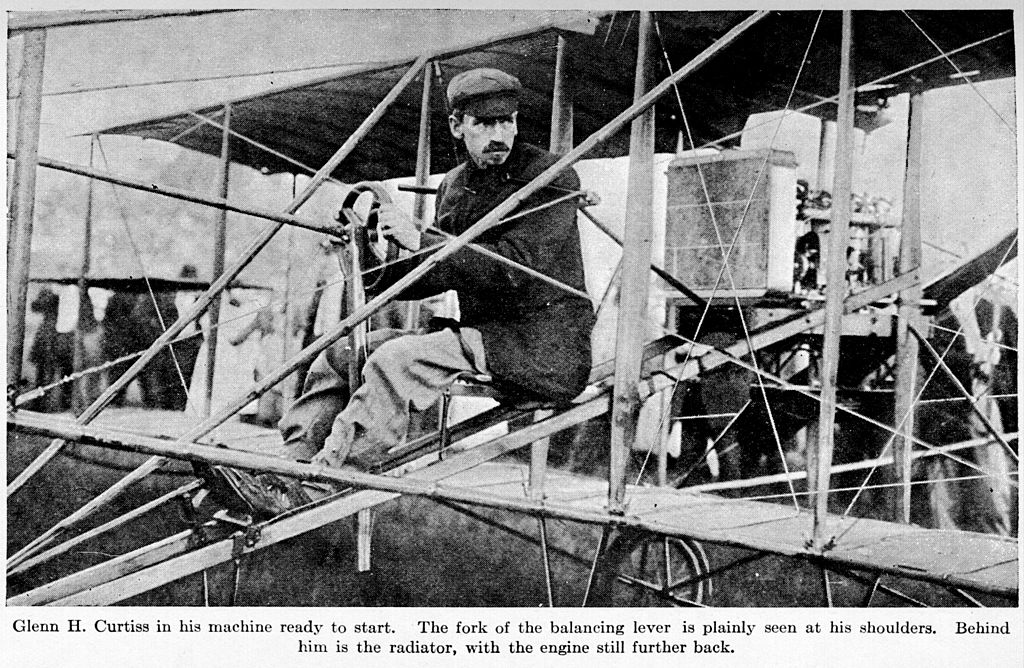









You said: Wouldn’t it be great to have a metal replica of Glenn Curtiss’ “June Bug” or “Jenny” placed outside the Curtiss Mansion alongside a statue of the man?
I think not, metal replica of the “June Bug” exist in Hammondsport, a “Jenny” metal replica is not a great idea. What it needs is something spectacular and historic. I believe that it would be great to build a metal replica of the Curtiss “Reims Racer”, with this Curtiss won the First international race in the history of aviation at Reims, France and gained the Gordon Bennett Aviation trophy. This race was part of the Grande Semaine d’Aviation (the First international public flying event) and was the most important contest in that event. Almost all of the prominent aviators of the time took part, and the 500,000 visitors included the then president of France and some european dignataries. Curtiss did beat Louis Bleriot (Bleriot XI), Hubert Latham (Antoinette VII), Eugene Lefebvre (Wright Model A) and George Cockburn (Farman III), so he did beat all the best airplanes in the World at that moment. He was congratuladed by the american Ambassador Henry White, Mrs. Theodore Roosevelt and Miss Ethel Roosevelt.